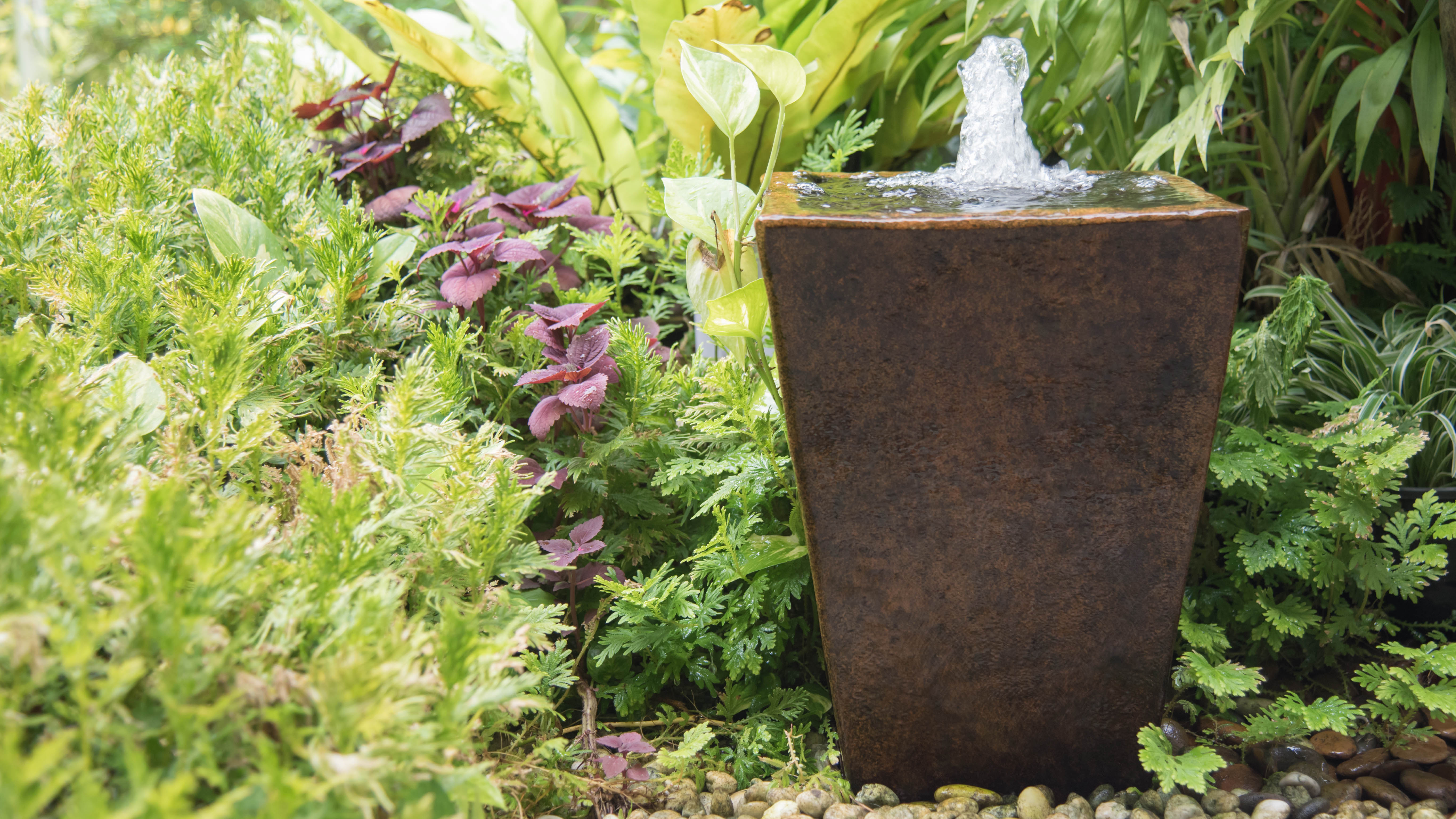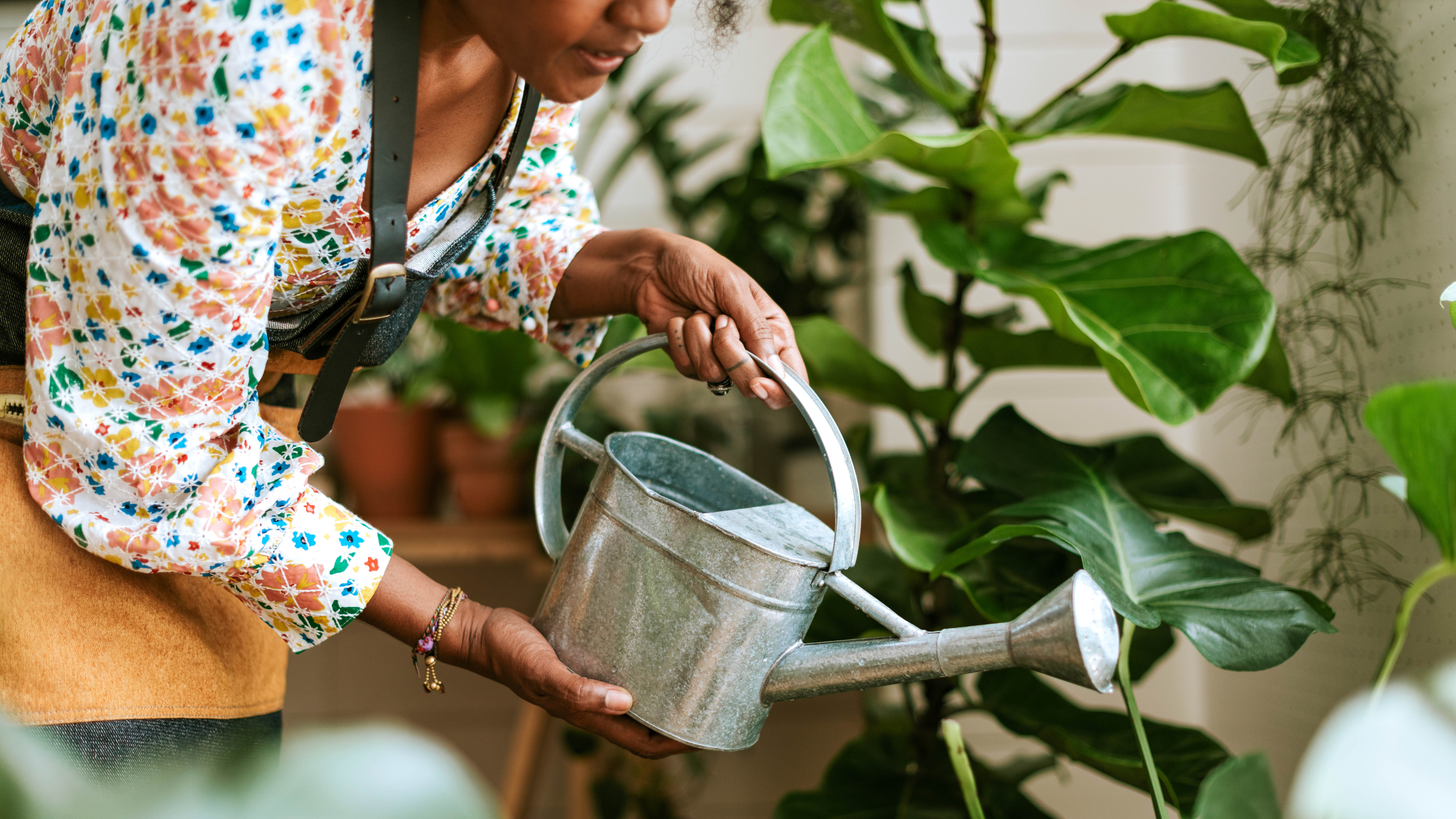7 ways to collect and reuse rainwater
Here’s how you can reuse your rainwater

Water conservation is becoming more important in reducing our impact on the environment. But it’s not just up to the water companies to deal with water shortage issues. We all need to play our part in reducing our reliance on treated water.
The United States Environmental Protection Agency advocates collecting rainwater from roofs and using it in your landscape. Plus, it’s free water so could reduce your bills too, it’s a win-win.
If you’re renovating your house and garden, you might want to think about investing in a large rainwater harvesting system that allows you to store rainwater in high-capacity tanks. Then it can be utilized all around your home for things like flushing your toilet.
However, for most people this isn’t an option, so here are some inexpensive and easy ways to collect and reuse rainwater that are quick to implement, but make a difference over the long term.
1. Install a rain barrel

One of the best ways to harvest rainwater is to collect the rain that falls onto your roof. A rain barrel is fairly straightforward to attach to your existing guttering. But don’t restrict yourself to the water falling onto the roof of your house - think about all your roofs.
You can collect the water that falls onto a shed, garage, workshop and even a greenhouse - anywhere that already has gutters and downspouts installed. And the more rain barrels you have dotted around your property, the easier it is to fill up watering cans and buckets for all sorts of tasks.
If you’ve got a rain chain, you can use this to direct water into a rain barrel. Here are some pros and cons to rain chains.
Sign up to get the BEST of Tom's Guide direct to your inbox.
Get instant access to breaking news, the hottest reviews, great deals and helpful tips.
Rain barrels come in a variety of sizes, but the most commonly used domestic rain barrels are 50 — 90 gallon. And contrary to what you might first think, a rain barrel doesn’t mean having an ugly plastic eyesore attached to the side of your house.
There are lots of interesting and decorative rain barrel designs to choose from, including plastic rain barrels designed to look like terracotta pots, that include space to plant flowers on the top. You can even buy old wine barrels that have been converted into water barrels, for a touch of rustic charm.
Rain barrels have at least one spigot, sometimes two, which makes it easy to fill up a watering can or a bucket so you can use the water in your garden.
When installing a rain barrel, it’s worth clearing out your gutters first to ensure less debris gets in the way of the water flow — here's how to clean your gutters.
2. Use rainwater to water your pots and raised beds

Once you’ve installed a rain barrel, the key is not to forget about it. You have to break the habit of reaching for the hose every time your plants need a drink. Instead, fill up your watering can and use that precious rainwater on the plants in your pots and raised beds as well as most other garden plants.
Not only does using the water in your rain barrel create space so that next time it rains you can collect more water. But since rain water hasn’t been treated, it’s much better for your plants than the treated, chlorinated water from your faucet.
3. Install a rainwater water feature

Why not divert your rainwater into a water feature. Creating a pond or water feature that utilizes rainwater is actually pretty simple. By digging a trench and extending the pipework underground from your downspout, you can create a wildlife friendly water garden or water feature.
The style, size and shape possibilities here are endless, though you’ll need to take into account how much rainfall you get where you live. But the key thing to remember is that if your water garden is fed solely by rainwater, then during hotter, dryer months, it may not hold any water at all. And because of this, we’re not talking about a fish pond.
A rain-fed water garden is a visual design feature. Plus, it has the added benefit that when it does contain water, it may attract more wildlife and pollinators to your garden. A good landscape gardener should be able to help out with this if you’re redesigning your garden.
Alternatively, if your garden naturally collects rainwater and becomes wet and boggy in a particular spot, don’t fight it. Why not lean into it and add pebbles and water plants to this area to make it a feature.
4. Use rainwater to wash your car

Okay, so it might not be as quick and convenient as washing your car with a hose or pressure washer. But if you’ve got a barrel full of rainwater, it makes sense to fill a bucket or two and use it to wash your car.
Even if you do the final rinse down with a hose, using a sponge and bucket of rainwater for the initial soap up and scrub stage, will at least be a better use of this precious resource. Plus, it’s much kinder to your paintwork than a pressure washer.
Just make sure your rainwater is filtered and clean before you use it to wash your car. Acidic rainwater can damage a car's paintwork, so you should avoid using it for this purpose if there's high levels of pollution in your region.
If you are cleaning your car, check out these car cleaning mistakes that you should avoid.
5. Use rainwater to water your indoor plants

When we think about using harvested rainwater to water plants, it’s easy to focus on outdoor plants that need a lot of watering during dry weather. But don’t forget, your house plants get watered year-round. And like your outdoor plants, indoor plants will thrive on rainwater since it hasn’t been treated or chlorinated.
So during wetter months, when your outdoor plants, pots, and raised beds are being watered by natural rainfall, it makes sense to use the rainwater you’ve collected in your water barrel to water your indoor plants instead.
6. Washing windows

We all do it, but when you really come to think about it, using precious drinking water to clean the exterior of your windows simply doesn’t make sense. Especially during hot, dry months when there’s already a huge demand on water supplies.
As long as your water barrel is clean and has a cover like this Owl Focus 37.5 Inch Mesh Cover for Rain Barrel ($6, Amazon) to keep insects and debris out, there’s no reason why you can’t fill a bucket and use this water to give your windows a spruce up.
Read our tips on how to clean windows for a streak-free shine.
7. Cleaning garden furniture and tools

Rainwater is ideal for cleaning down anything in your garden that might need a wash. Whether it’s your garden seating, or the exterior of your barbecue, there are often things in the garden that, without thinking, we clean using drinking water.
You can use rainwater to wash that children's swing set that got covered in bird poop, or to clean down garden tools that are caked in mud. None of these tasks require purified drinking water, so we just need to get out of the habit of heading to the faucet every time we need a bucket of water.
Note: While rainwater is an excellent and often underused resource, it is not recommended that you drink rainwater or use it for cooking. According to the CDC rainwater can easily be contaminated on its way into your collection barrel and it may contain bacteria, parasites or chemicals.
More from Tom's Guide
Helen started reviewing home and kitchen appliances in 2007 at the Good Housekeeping Institute and has never looked back. She’s now freelance and reviews all sorts of appliances from her home in a pretty village in the UK. Despite having reviewed hundreds of coffee machines in her time, she’s only recently developed a love for coffee and a daily coffee habit, which makes tasting all those coffees much more enjoyable!
-
anondelf Things to note that were not mentioned in this article:Reply
Legality:
There are restrictions on what states can collect rain water. Be sure to check and see if this is legal in your state first.
Contamination:
The levels of pollution, pollen, mold, and other contaminants are low — possibly lower than your public drinking water supply. Keep in mind, rain does pick up low levels of bacteria as well as dust and occasional insect parts. If you're collecting rainwater from the roof, there are even more contaminations and chemicals that are introduced by the roofing material, as well as any bacteria and trash that may collect on top of your house. Therefore, cleaning your car, windows, it watering your plants may not be such a good idea.

